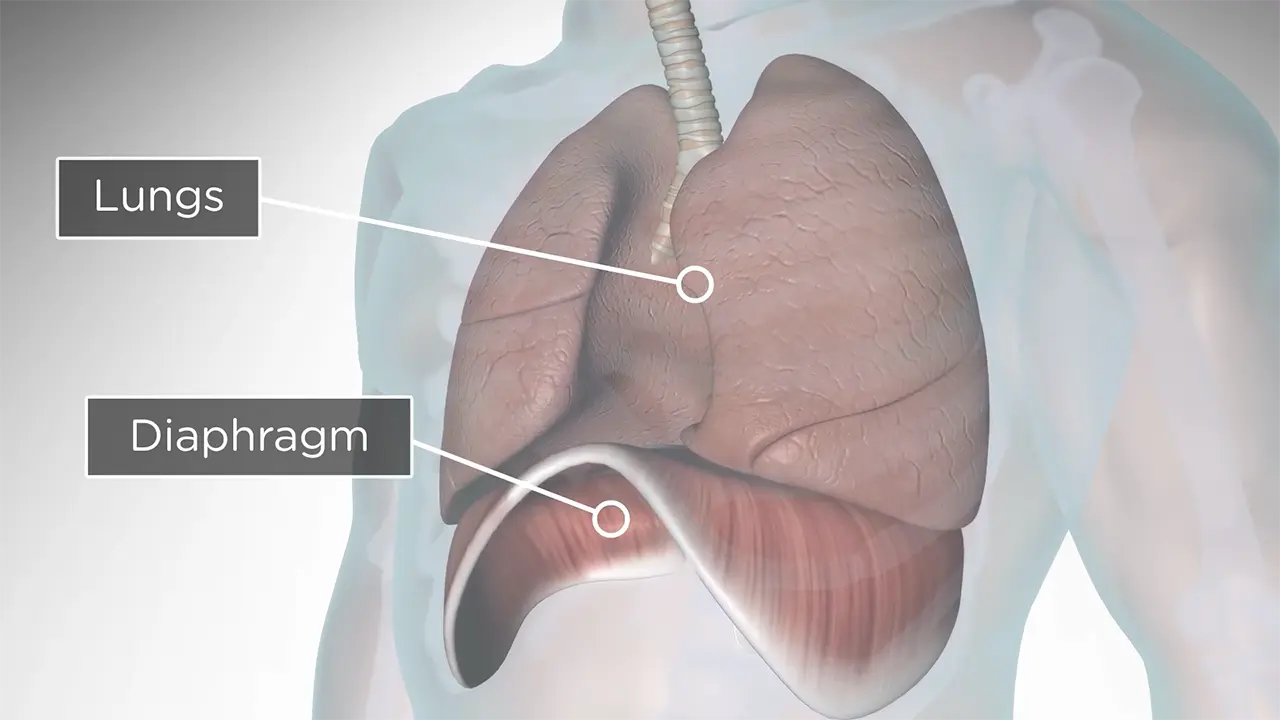How To Sing: A Ridiculously Detailed Guide
Singing Made Easy – Your Journey to Better Vocals Starts Here!
1. The Benefits of Learning How To Sing

Singing is a powerful form of expression that transcends language and cultural barriers.
Whether you’re an aspiring vocalist or want to develop your singing skills as a hobby, proper vocal training is essential.
Learning how to sing not only brings joy and fulfillment but also offers numerous benefits, including:
- Improved breathing techniques
- Enhanced emotional intelligence
- Increased confidence and self-esteem
- Stress relief and relaxation
2. Understanding Your Voice
Before starting your singing journey, you must know what makes a good singer great. First, understanding your voice’s anatomy and mechanics is crucial.
This knowledge will help you maximize your vocal potential and avoid potential injuries.
Anatomy of the Voice
The larynx, commonly called the voice box, produces the human voice. Key components include:
- Vocal folds: Two muscular bands that vibrate to produce sound when air from the lungs passes through them
- Diaphragm: This dome-shaped muscle underneath the lungs regulates airflow and provides the necessary breath support for singing.
- Resonators: Spaces like the oral and nasal cavities, as well as the pharynx (throat), act as natural resonators, amplifying and shaping the sound produced by the vocal folds.
- Articulators: The tongue, lips, and jaw are responsible for articulating and forming the specific sounds and words we sing.
Vocal Registers
Vocal registers refer to the different ranges or mechanisms of the voice, each with its own unique tonal characteristics and production methods.
The two primary registers are:
- Chest voice: Produced by thicker vocal fold vibrations, the chest voice creates a deeper, more resonant sound. This register is often associated with the lower range of the voice and is commonly used in genres like pop, rock, and musical theater.
- Head voice: The head voice produces a lighter, higher-pitched tone from thinner vocal fold vibrations. This register is typically utilized in the voice’s upper range and is essential for hitting those soaring high notes.
In addition to these two main registers, some singers and vocal pedagogues also recognize a third register known as the “Mixed Voice.”
Singers widely use the mixed voice, particularly in contemporary genres like pop and musical theater.
However, this concept is controversial, as some experts argue that it is not a distinct physiological mechanism but rather a coordinated technique that involves a gradual transition between the chest and head registers.
Developing a solid understanding and control over your vocal registers is crucial for expanding your range, adding depth and versatility to your singing, and minimizing strain on your vocal cords.
Vocal Range and Timbre
We all have a unique vocal range that we can comfortably produce, from the lowest to the highest note. This range is influenced by age, genetics, and training.
Renowned vocal coach and author Brett Manning emphasizes the importance of understanding and accepting your natural vocal range.
“Trying to force your voice beyond its capabilities can lead to strain and damage,” he warns.
“Instead, focus on developing the fullest potential within your individual range.” [Source: Brett Manning, Author of “Vocal Artistry”]
In addition to the range, each voice possesses a distinct timbre or tone color, giving it a unique character and allowing it to be distinguishable.
Timbre is influenced by vocal cord thickness, resonating spaces, and the singer’s emotional expression.
By developing an intimate understanding of your vocal range and timbre, you can learn to embrace your voice’s unique qualities and maximize its potential.
3. Developing Proper Breathing Technique
Proper breathing techniques are the foundation of good singing.
Understanding and practicing the correct breathing technique is crucial, as it can significantly improve your singing ability. Proper breathing supports your vocal cords and improves stamina and endurance.
Diaphragmatic Breathing

Image credit to NIH
The key to effective breath management is mastering diaphragmatic breathing, also known as belly breathing.
This technique involves engaging the diaphragm, a muscle located beneath the lungs, to draw air deep into the lower portions of the lungs.
Consistent diaphragmatic breathing practice improves breath control and enhances vocal stamina and endurance, allowing one to sustain longer phrases without strain.
Breath Support
While effective inhalation is crucial, proper breath support during exhalation is equally vital for singing. (What is vocal support)
It involves engaging and coordinating the muscles of the abdomen, back, and pelvic floor to maintain a consistent, controlled airflow during vocalization.
Dr. Ingo Titze, a renowned vocal scientist and author of “Principles of Voice Production,” explains,
“Breath support is the key to maintaining a stable laryngeal configuration and minimizing unnecessary muscular effort during phonation.” [Source: Ingo R. Titze, Ph.D., “Principles of Voice Production”]
By mastering diaphragmatic breathing and breath support, you’ll improve your vocal control and endurance and reduce the risk of vocal strain and fatigue.
Exercises for Strengthening the Diaphragm
To further develop your breath management skills, incorporate these exercises daily:
- Book Breathing: Lie on your back and place a book on your abdomen. Inhale deeply, allowing the book to rise as your diaphragm expands, and exhale slowly, watching the book lower.
- Lip Trills: Buzz your lips while exhaling a steady stream of air, gradually increasing the duration and exploring different pitches.
- Straw Breathing: Inhale and exhale through a thin straw, providing resistance that strengthens the diaphragm and encourages controlled airflow.
You’ll experience greater vocal control and stamina as your diaphragm and supporting muscles strengthen.
This post covers a more in-depth breathing exercises for singers
4. Mastering Vocal Warm-Ups
Singers should warm up their voices before practicing or performing, just like athletes. Warm-ups prepare your vocal cords for the demands of singing and reduce the risk of injury.
Importance of Warm-Ups
- Increased blood flow to the vocal folds and improves flexibility and responsiveness.
- Gradual stretching and conditioning of the intrinsic laryngeal muscles, reducing the risk of strain.
- Improved vocal agility and flexibility, allowing smoother transitions between registers and greater range.
- Mental and physical preparation, helping you establish focus and connect with your breath and vocal instrument.
Neglecting warm-ups can lead to issues such as vocal fatigue, cracking or breaking of the voice, and even long-term damage to the delicate vocal folds.
Vocal Warm-Up Exercises
- Lip Trills: This simple exercise involves buzzing your lips while gently gliding up and down your range. Lip trills engage the breath and vocal folds, gradually increasing blood flow and loosening the facial muscles.
- Humming Exercises: Humming on different pitches helps engage the vocal resonators and prepare the voice for sustained vocalization. Start on a comfortable middle pitch and gradually expand your range.
- Sirens: Also known as vocal slides, sirens involve smoothly gliding from the bottom to the top of your range and back down. This exercise improves agility, breath control, and smooth transition between registers.
- Staccato Exercises: Practicing detached, staccato notes on different vowel sounds can help improve articulation and coordination between the breath and vocal folds.
By consistently incorporating a well-rounded warm-up routine, you’ll protect your voice and enhance your overall vocal performance and longevity as a singer.
Here’s 11 most effective vocal warm up exercises.
5. Improving Vocal Tone and Resonance
A rich, resonant vocal tone is the hallmark of a captivating singer.
It allows your voice to project with clarity and emotional depth, captivating your audience and imbuing your performance professionally.
Developing a strong, well-supported tone is essential for singers of all genres and levels.
Resonance and Projection
Resonance refers to the amplification and reinforcement of the vocal tone within the various chambers and spaces of the vocal tract, including the oral and nasal cavities, pharynx (throat), and chest cavity.
When these resonating spaces are effectively engaged, they act as natural amplifiers, allowing your voice to project with greater power and clarity without excessive strain.
Vocal scientist Johan Sundberg states,
“Resonance is a key factor in determining the power of a singer’s voice.” [Source: Johan Sundberg, Ph.D., “The Science of the Singing Voice”]
Proper resonance enhances projection and contributes to the unique tonal quality and timbre of each individual voice.
Techniques for Enhancing Vocal Tone
- Vowel Modification: You can alter the way sound resonates within your vocal tract by slightly adjusting the shape of your vowels.
- Placement Exercises: Focus your voice in different resonating spaces, such as the nasal cavity or mask area.
- Nasality Reduction Exercises: Improve vowel clarity by minimizing excessive nasal resonance.
- Cord Closure Exercises: Proper vocal fold closure is crucial for producing a clear, resonant tone.
- Proper Posture: A proper singing posture is also very important to get that nice sounding resonance from your voice.
6. Building Vocal Strength and Stamina
Singing requires significant muscular strength and stamina, especially for sustained notes or lengthy performances.
Vocal Exercises for Strength
- Scales and Arpeggios: Sing through various scale and arpeggio patterns to build vocal agility and endurance.
- Vocal Fry Exercises: Engage your vocal folds in a low, creaky register to develop control and power.
- Sustained Vowels: Holding a vowel sound for an extended period, gradually increasing the duration, is an excellent way to build stamina and breath support.
- Tongue Twisters: Rapid-fire tongue twisters improve articulation and challenge your vocal endurance as you coordinate breath support with intricate vocal movements.
- Belting: Belting is a vocal technique commonly used in musical theater, pop, and rock music to sing powerful, high notes with intensity and volume.
It involves using the chest voice in the higher part of the vocal range, often pushing the voice to its limits for dramatic effect. While belting can create a strong and impactful sound, it requires proper technique and training to avoid strain or damage to the vocal cords.
Tips for Avoiding Vocal Fatigue
- Stay Hydrated: Drink plenty of water before, during, and after singing to keep your vocal folds hydrated
- Incorporate Rest Periods: Avoid overusing your voice, especially when you feel strain or fatigue.
- Vocal Cool-Down: Just as warm-ups are essential, a cool-down routine can help your voice transition back to its resting state.
- Vocal Health Supplements: Certain supplements, such as vocal sprays or lozenges containing ingredients like licorice root or aloe vera, can soothe and protect your vocal cords, promoting recovery after intense vocal use.
By prioritizing vocal strength training and following proper recovery protocols, you’ll improve your stamina and vocal endurance and safeguard your long-term vocal health and longevity as a singer.
7. Developing Articulation and Diction
Clear articulation and diction are crucial for effective communication through song. Poor pronunciation can muddy the lyrics and diminish the overall impact of your performance.
Importance of Clear Articulation
- Ensures that your lyrics are intelligible and easily understood.
- Enhances the emotional connection with your audience.
Exercises for Improving Diction
- Tongue Twisters: Practicing tongue twisters with challenging consonant combinations can help improve the agility and precision of your articulators (tongue, lips, and jaw).
- Consonant Clarity Exercises: Focus on exaggerating the formation of consonants, particularly those that are problematic for you.
- Vocal Warm-ups with Lyrics: Rather than simply vocalizing on vowel sounds, incorporate lyrics or tongue twisters into your warm-up routine.
- Mirroring Exercises: Stand in front of a mirror and observe the movements of your mouth, tongue, and lips as you articulate challenging words or phrases.
- Language-Specific Exercises: If you sing in multiple languages, such as Italian or German, seek language-specific exercises and resources to help you master the unique vowel sounds and consonant formations.
8. Expanding Vocal Range
Expanding your vocal range broadens your repertoire and adds depth and versatility to your singing.
Understanding Vocal Range
Your vocal range is influenced by several factors, including:
- Age: As we age, our vocal folds and muscles undergo changes that can affect our range, particularly in the higher registers.
- Gender: Females generally have a lower overall range than males due to vocal fold thickness and length differences.
- Genetics: Some individuals are naturally gifted with a broader range, while others may have a more limited span.
- Training: Consistent vocal training and exercises can help gradually expand your range over time by strengthening your vocal muscles and improving breath support.
It is important to note that attempting to force your voice beyond its current capabilities can lead to strain and potential injury.
Respecting your natural range and focusing on developing its fullest potential is crucial for long-term vocal health and sustainability.
Exercises for Expanding Range
- Octave Jumps: Practice leaping between notes an octave apart, starting within your comfortable range and gradually expanding outward.
- Sliding Exercises: Smoothly glide between your highest and lowest notes, gradually increasing the span over time.
- Vowel Modifications: Experiment with different vowel shapes and placements when approaching your range extremes.
- Register Blending: Work on seamlessly blending your chest and head registers and exploring the mixed voice (if applicable).
- Falsetto Exercises (for males): For male singers, developing a strong falsetto can help extend the upper range and improve overall flexibility.
9. Mastering Vocal Techniques
Mastering various vocal techniques can elevate your performances and add emotional depth to your singing.
- Vibrato: A controlled, pulsating change in pitch that adds warmth and expression.
- Legato: A smooth, connected singing style without breaks between notes.
- Staccato: A detached, percussive singing style with clear separations between notes.
- Messa Di Voce: Singing exercise where the singer begins a note softly, gradually increases the volume to a climax, and then decreases the volume back to the initial soft level, all while maintaining control and smoothness in the voice.
By mastering techniques like vibrato, legato, staccato, dynamic, or messa di voce, you’ll enhance the emotional depth and expressive range of your performances and demonstrate your versatility as a well-rounded vocalist.
10. Exploring Different Vocal Styles
The world of singing encompasses a rich tapestry of genres and styles, each with unique techniques, tonalities, and expressive qualities.
Exploring different vocal styles broadens your musical horizons and enhances your versatility as a singer, allowing you to adapt to diverse performance settings and creative opportunities.
- Classical: Classical singing is characterized by a focused, resonant tone and meticulous attention to proper technique.
- Pop: Pop singing often features a bright, contemporary sound focusing on catchy melodies and hooks.
- Jazz: Jazz singing emphasizes improvisation, rhythmic complexity, and a relaxed, soulful delivery.
- Rock: Rock vocals are known for their gritty, powerful sound and techniques like growling, screaming, and distortion.
11. Maintaining Vocal Health
As a singer, your voice is your most precious instrument, and maintaining optimal vocal health is crucial for longevity and consistent performance quality.
Neglecting proper vocal care can lead to strain, injury, and even permanent damage to your delicate vocal folds.
Importance of Vocal Health
Protecting your vocal health should be a top priority, as even minor issues can significantly affect your singing abilities.
According to Dr. Steven Zeitels, a renowned laryngologist and vocal scientist,
“Singers are vocal athletes, and just like any other athlete, they need to prioritize injury prevention and recovery strategies.” [Source: Steven Zeitels, M.D., “Vocal Health and Pedagogy”]
Tips for Preventing Vocal Strain
- Hydration: Drink plenty of water to keep your vocal cords lubricated.
- Rest: Allow adequate rest for your voice between intense singing sessions or performances.
- Straw Phonation exercises can help reduce vocal strain.
- Vocal Health Supplements: Consider supplements like vocal sprays or lozenges to soothe and protect your vocal cords.
12. Seeking Professional Guidance
While online resources and self-study can be valuable, working with a qualified vocal coach can accelerate your progress and provide personalized feedback and guidance.
Vocal Coaches vs. Online Resources
While blogs, forums, and instructional videos can offer a wealth of information and serve as supplementary learning tools.
They often lack the personalized feedback and customized instruction that a dedicated vocal coach can provide.
A vocal coach can:
- Assess your strengths, weaknesses, and vocal tendencies.
- Customize a plan and develop your specific goals and challenges.
- Provide real-time feedback and adjustments to optimize your technique.
- Identify and address potential issues or vocal health concerns before they escalate.
- Offer guidance on repertoire selection, performance preparation, and career development.
Finding the Right Vocal Coach
- Qualifications and Experience: Look for coaches with formal training in vocal pedagogy and a proven track record of working with singers at various levels.
- Teaching Style and Compatibility: Every coach has a unique teaching style, and it’s essential to find one that resonates with your learning preferences.
- Genre and Style Specialization: If you have a specific genre or style in mind, consider seeking a coach with expertise in that area.
- Communication and Rapport: A strong rapport and open communication with your coach are essential for growth.
- Seek Recommendations: Ask fellow singers, music teachers, or voice professionals for recommendations on reputable vocal coaches in your area.
13. Conclusion
Learning to sing is a rewarding journey that requires dedication, patience, and consistent practice.
By understanding the fundamentals of vocal technique, developing proper breathing habits, and exploring various styles and exercises, you will unlock your true singing potential.
Remember, every voice is unique, and progress may unfold differently. Embrace the process, celebrate your milestones, and continue refining your craft with passion and perseverance.
With the proper guidance and a commitment to continuous improvement, you can achieve remarkable growth as a singer and find profound joy in your vocal expression.



